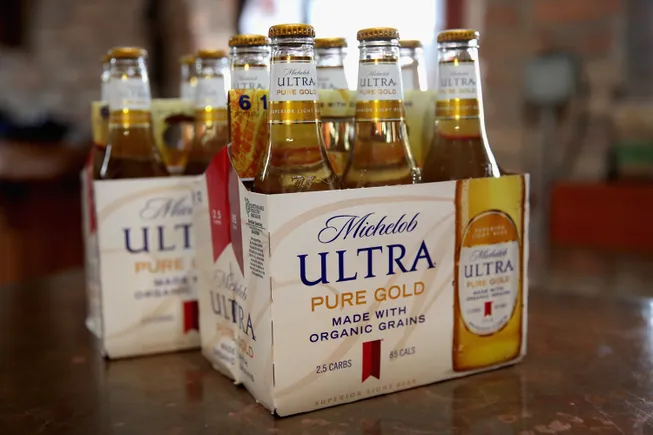Dive Brief:
- AB InBev’s flagship brands, Michelob Ultra and Busch Light, have been instrumental in driving sales growth in the U.S. during a period when the broader beer category has been experiencing a decline, according to insights shared by CEO Michel Doukeris in a recent earnings call.
- Both brands recorded significant market share increases in the last quarter of 2024. However, Doukeris expressed caution regarding sales trends for 2025, highlighting external factors such as economic pressures on consumers and adverse weather events that are affecting the industry.
- As demand for beer wanes, major breweries are increasingly relying on their premium brands to sustain growth.
Dive Insight:
In the wake of a boycott that significantly impacted Bud Light’s sales, AB InBev has managed to rebound, indicating that its growth strategy is yielding positive results amidst persistent challenges in the domestic beer market. According to a TD Cowen report, this market saw a 4.2% decline in sales last year, underscoring the difficult environment for brewers.
During the earnings call, Doukeris reported a positive trajectory in the U.S. market, with several of AB InBev’s brands gaining market share in 2024. He noted that the company has invested $7.2 billion in marketing efforts while simultaneously reducing its debt by $6.9 billion.
However, AB InBev’s 2024 earnings report presented a mixed landscape. While revenues from operations in the U.S. and Canada rose by 2%, overall volumes saw a decline of 3.8%. Doukeris pointed out that various factors, including inflationary pressures, colder weather conditions, and demographic shifts in certain regions, have been affecting the company’s performance.
“The industry has not yet reached a positive volume point,” Doukeris acknowledged. “However, in terms of revenue, the industry remains stable and is showing growth. We will monitor the potential tailwinds as we approach the summer months.”
Additionally, Doukeris highlighted the success of the company’s beyond-beer portfolio. Notably, Cutwater has emerged as the top-selling canned cocktail brand in the U.S., while Nutrl has secured its position as the second-largest vodka seltzer brand, trailing only High Noon.
Although AB InBev’s growth continues to be driven primarily by its largest brands, Doukeris mentioned that approximately 10% of the company’s revenue now derives from products that provide alternative experiences, including non-alcoholic, low-carb, and zero-sugar beverages.
Recent earnings reports from competing beer companies have also illustrated the broader challenges facing the sector. For instance, Molson Coors is shifting its focus toward spirits and premium beers such as Blue Moon, while Heineken is placing significant bets on its non-alcoholic offerings, such as Heineken 0.0.
In a note to investors, TD Cowen analyst Robert Moskow commended AB InBev for successfully navigating the aftermath of the Bud Light boycott. He asserted that the growth of brands like Michelob Ultra and Busch Light could help mitigate the broader challenges facing the industry. However, Moskow cautioned that AB InBev has yet to sufficiently diversify its portfolio into beyond-beer brands to fully insulate itself from these ongoing issues.
As AB InBev looks toward the future, the company must navigate a landscape marked by evolving consumer preferences and economic uncertainties. The performance of its flagship brands will be crucial in determining the company’s trajectory as it seeks to adapt and thrive in an increasingly competitive market. The success of its investment strategies and the expansion of its non-beer product lines will likely play a significant role in shaping the company’s resilience against industry-wide challenges in the coming years.


